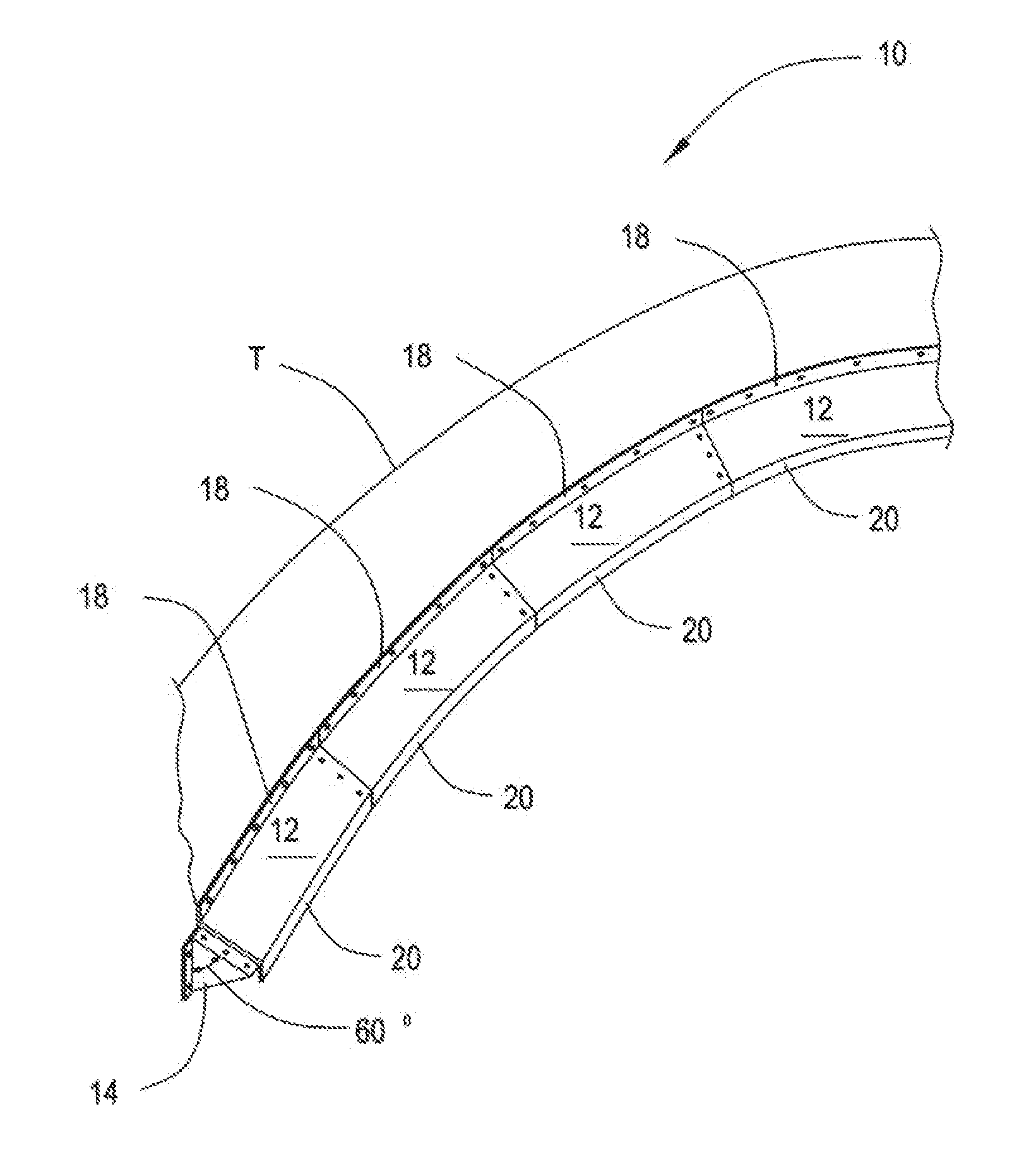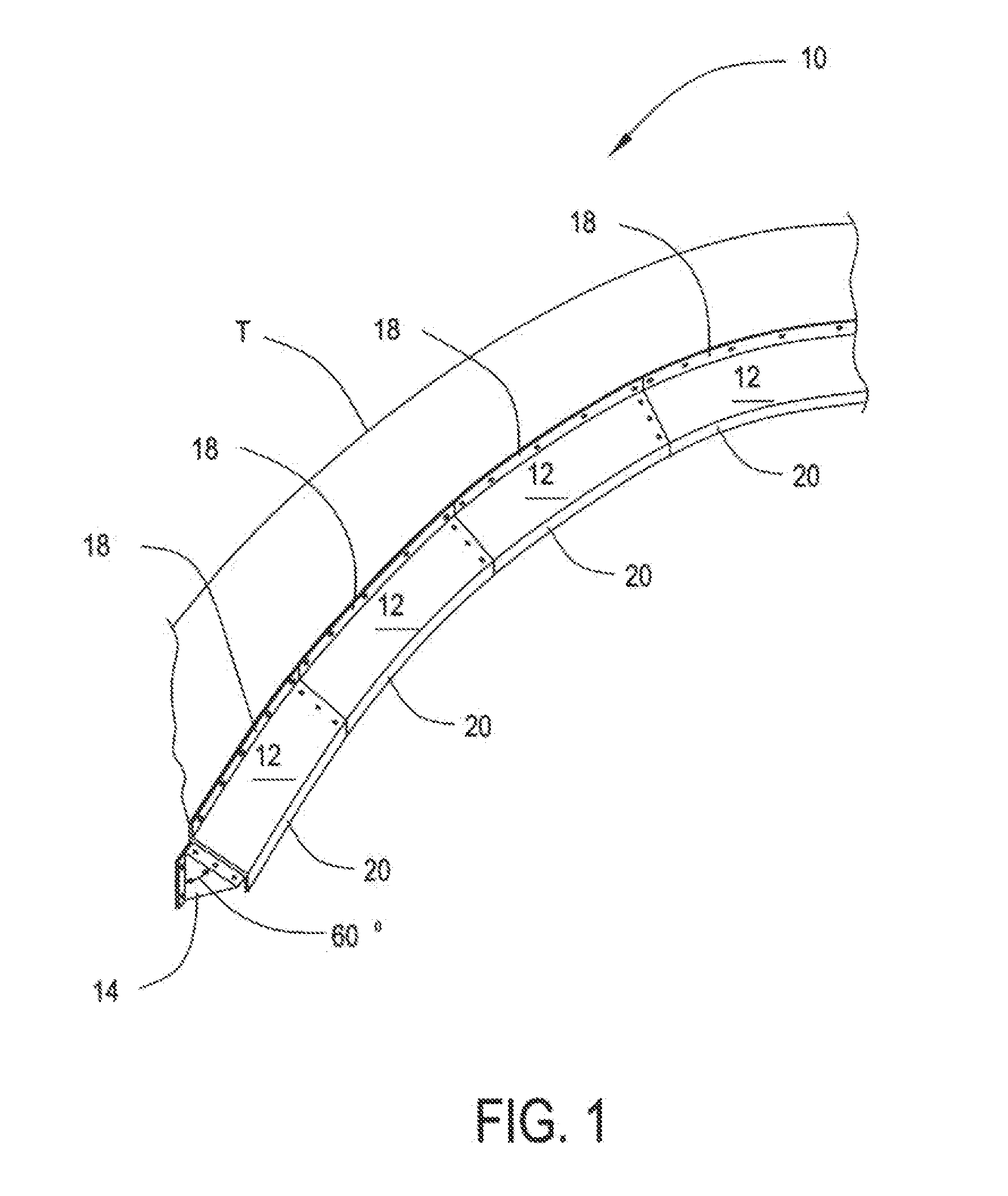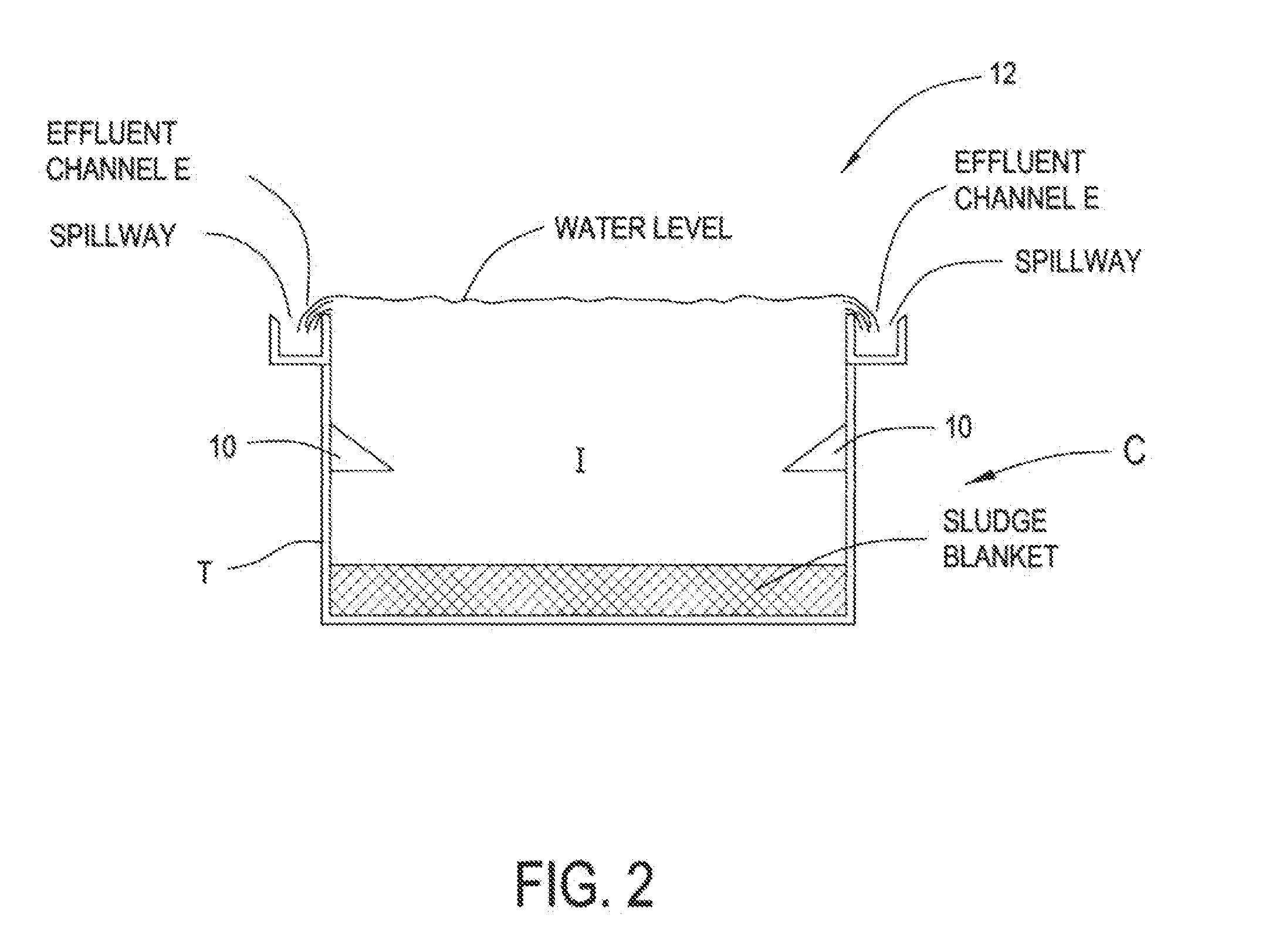Density current baffle for a clarifier tank
a technology of density current and clarifier tank, which is applied in the direction of sedimentation settling tank, liquid displacement, separation process, etc., can solve the problems of affecting the settling of inaccurately defining the vertical location of the baffle on the wall of the clarifier, and difficulty in settling solids in the bottom of the clarifier tank. , to achieve the effect of increasing the flow rate of the clarifier tank and improving the performan
- Summary
- Abstract
- Description
- Claims
- Application Information
AI Technical Summary
Benefits of technology
Problems solved by technology
Method used
Image
Examples
Embodiment Construction
[0046]In one arrangement, as shown in FIG. 1, a density current baffle 10 is shown attached to a tank wall T. Density current baffle 10 is made from a plurality of connected baffle surfaces 12, each of which forming a portion of baffle 10 about the circumference of tank wall T.
[0047]Bracket elements 14 are positioned under baffle surfaces 12, preferably at the connection points between adjacent baffle surfaces as shown in FIG. 1. In one arrangement, an upper mounting flange 18 is located at the top edge of each of baffle surfaces 12 for coupling baffle surfaces 12 to tank wall T. Also as shown in FIG. 1, an end flange 20 projects downward from each of baffle surfaces 12, substantially perpendicular to tank wall T. Bracket element 14 and baffle surfaces 12 can be molded as a one piece fiberglass baffle.
[0048]FIG. 2 shows a cut away view of baffle 10 within a typically circular type clarifier tank C, having an influent I, tank wall T, a spillway effluent channel and a weir W. Sludge b...
PUM
| Property | Measurement | Unit |
|---|---|---|
| diameter | aaaaa | aaaaa |
| diameter | aaaaa | aaaaa |
| angle | aaaaa | aaaaa |
Abstract
Description
Claims
Application Information
 Login to View More
Login to View More - R&D
- Intellectual Property
- Life Sciences
- Materials
- Tech Scout
- Unparalleled Data Quality
- Higher Quality Content
- 60% Fewer Hallucinations
Browse by: Latest US Patents, China's latest patents, Technical Efficacy Thesaurus, Application Domain, Technology Topic, Popular Technical Reports.
© 2025 PatSnap. All rights reserved.Legal|Privacy policy|Modern Slavery Act Transparency Statement|Sitemap|About US| Contact US: help@patsnap.com



